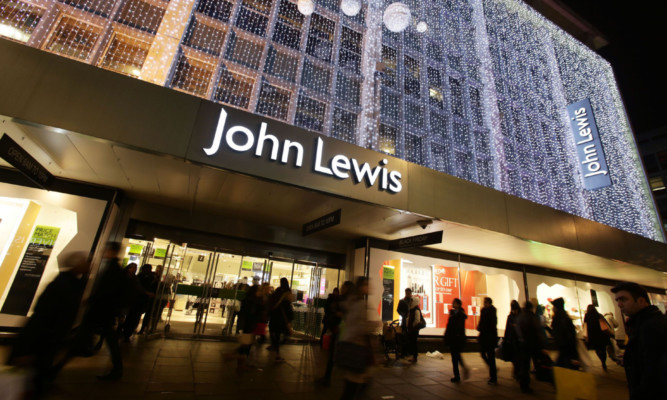The first sales figures from the Christmas period have started to trickle through, and it has been a mixed bag.
House of Fraser is “delighted” with its festive performance, with both its in-store and online operation generating increased sales. Good stuff.
Next also reported strong sales growth in the run-up to Christmas, and raised its (admittedly previously downgraded) profits guidance as a result.
But instead of trumpeting a festive job well done, the firm one of the stronger performers on the high street in recent years, having overtaken Marks & Spencer on a bottom-line basis last year chose to warn on expectations for the year ahead.
John Lewis, the employee-owned retailer which is seen as a barometer for high street performance, also posted seemingly healthy like-for-like sales growth of 4.8% for the five weeks to December 27.
However, it was the online offering that kept things in positive territory, with in-store sales actually down 1% in the period.
Managing director Andy Street made a telling comment when he said he expected the negative shop result to beat the wider retail market.
Let us hope Mr Street is wide of the mark in that assessment, and that the collapse into administration of the loss-making fashion chain Bank a move that has put more than 1,500 jobs at risk proves to be the only casualty of the season.
But I think that may prove to be wishful thinking.
Trading figures are due from supermarket chains Sainsbury and Tesco in the next couple of days, and there has been no shortage of doom-laden speculation over the latter business as boss Dave Lewis gets set to lay out his plans to revitalise the troubled retailer.
However, for the high street I think I’ll wait for the Debenhams update on January 13 before making my mind up over how good or bad a season it has proved to be for our major retailers.
The high street stalwart has had a tough time of late. It was the most high-profile loser in the 2013 festive bun fight, and posted a near 25% drop in annual profits in October, but remains one the UK’s most important trend-setting retailers.
Whatever should transpire in the days ahead, though, one thing that I am confident enough to say is that the much-spoken about ‘death of the high street’ remains some way off yet.
Multi-channel retailing is obviously the future, and retailers big and small must adapt to that reality or face the consequences.
However, I firmly believe there is still life in the old dog yet.
* Many of you may never have heard of Andy Samuel.
But he became one of the most influential people in the UK this week when he took up his new role as head of the Oil and Gas Authority (OGA), the new North Sea industry regulator.
Mr Samuel, a former senior executive with BG Group, has the unenviable task of making the recommendations from Sir Ian Wood’s review of the basin a workable reality.
The goal is ultimately to extend the life of the UK Continental Shelf by helping bring forward innovative solutions to ensure maximum production is achieved.
His task was always going to be tough as he battled against the vested interests that continue to exist across the region.
But the recent plunge in the price of oil it is edging towards $50 a barrel, less than half the price it was in the summer has only served to make a hard task even harder.
The industry is in desperate need of a strong leader, and I hope Mr Samuel can withstand the pressures and make the changes required to ensure a prosperous North Sea for decades to come.
The price of failure hardly bears thinking about.
